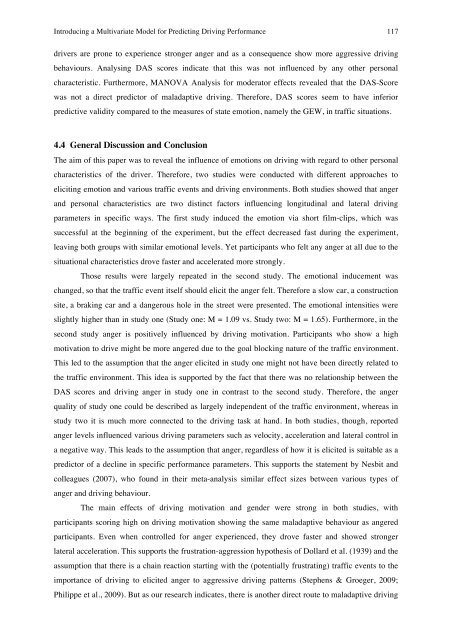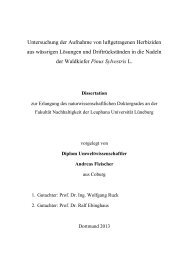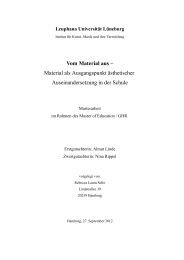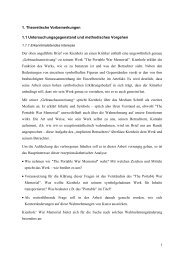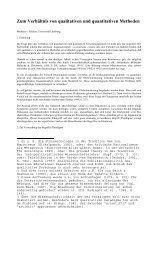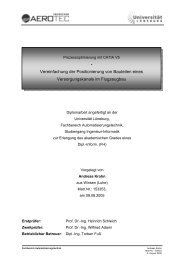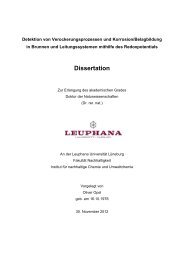Determinants of Emotional Experiences in Traffic Situations ... - OPUS
Determinants of Emotional Experiences in Traffic Situations ... - OPUS
Determinants of Emotional Experiences in Traffic Situations ... - OPUS
You also want an ePaper? Increase the reach of your titles
YUMPU automatically turns print PDFs into web optimized ePapers that Google loves.
Introduc<strong>in</strong>g a Multivariate Model for Predict<strong>in</strong>g Driv<strong>in</strong>g Performance 117<br />
drivers are prone to experience stronger anger and as a consequence show more aggressive driv<strong>in</strong>g<br />
behaviours. Analys<strong>in</strong>g DAS scores <strong>in</strong>dicate that this was not <strong>in</strong>fluenced by any other personal<br />
characteristic. Furthermore, MANOVA Analysis for moderator effects revealed that the DAS-Score<br />
was not a direct predictor <strong>of</strong> maladaptive driv<strong>in</strong>g. Therefore, DAS scores seem to have <strong>in</strong>ferior<br />
predictive validity compared to the measures <strong>of</strong> state emotion, namely the GEW, <strong>in</strong> traffic situations.<br />
4.4 General Discussion and Conclusion<br />
The aim <strong>of</strong> this paper was to reveal the <strong>in</strong>fluence <strong>of</strong> emotions on driv<strong>in</strong>g with regard to other personal<br />
characteristics <strong>of</strong> the driver. Therefore, two studies were conducted with different approaches to<br />
elicit<strong>in</strong>g emotion and various traffic events and driv<strong>in</strong>g environments. Both studies showed that anger<br />
and personal characteristics are two dist<strong>in</strong>ct factors <strong>in</strong>fluenc<strong>in</strong>g longitud<strong>in</strong>al and lateral driv<strong>in</strong>g<br />
parameters <strong>in</strong> specific ways. The first study <strong>in</strong>duced the emotion via short film-clips, which was<br />
successful at the beg<strong>in</strong>n<strong>in</strong>g <strong>of</strong> the experiment, but the effect decreased fast dur<strong>in</strong>g the experiment,<br />
leav<strong>in</strong>g both groups with similar emotional levels. Yet participants who felt any anger at all due to the<br />
situational characteristics drove faster and accelerated more strongly.<br />
Those results were largely repeated <strong>in</strong> the second study. The emotional <strong>in</strong>ducement was<br />
changed, so that the traffic event itself should elicit the anger felt. Therefore a slow car, a construction<br />
site, a brak<strong>in</strong>g car and a dangerous hole <strong>in</strong> the street were presented. The emotional <strong>in</strong>tensities were<br />
slightly higher than <strong>in</strong> study one (Study one: M = 1.09 vs. Study two: M = 1.65). Furthermore, <strong>in</strong> the<br />
second study anger is positively <strong>in</strong>fluenced by driv<strong>in</strong>g motivation. Participants who show a high<br />
motivation to drive might be more angered due to the goal block<strong>in</strong>g nature <strong>of</strong> the traffic environment.<br />
This led to the assumption that the anger elicited <strong>in</strong> study one might not have been directly related to<br />
the traffic environment. This idea is supported by the fact that there was no relationship between the<br />
DAS scores and driv<strong>in</strong>g anger <strong>in</strong> study one <strong>in</strong> contrast to the second study. Therefore, the anger<br />
quality <strong>of</strong> study one could be described as largely <strong>in</strong>dependent <strong>of</strong> the traffic environment, whereas <strong>in</strong><br />
study two it is much more connected to the driv<strong>in</strong>g task at hand. In both studies, though, reported<br />
anger levels <strong>in</strong>fluenced various driv<strong>in</strong>g parameters such as velocity, acceleration and lateral control <strong>in</strong><br />
a negative way. This leads to the assumption that anger, regardless <strong>of</strong> how it is elicited is suitable as a<br />
predictor <strong>of</strong> a decl<strong>in</strong>e <strong>in</strong> specific performance parameters. This supports the statement by Nesbit and<br />
colleagues (2007), who found <strong>in</strong> their meta-analysis similar effect sizes between various types <strong>of</strong><br />
anger and driv<strong>in</strong>g behaviour.<br />
The ma<strong>in</strong> effects <strong>of</strong> driv<strong>in</strong>g motivation and gender were strong <strong>in</strong> both studies, with<br />
participants scor<strong>in</strong>g high on driv<strong>in</strong>g motivation show<strong>in</strong>g the same maladaptive behaviour as angered<br />
participants. Even when controlled for anger experienced, they drove faster and showed stronger<br />
lateral acceleration. This supports the frustration-aggression hypothesis <strong>of</strong> Dollard et al. (1939) and the<br />
assumption that there is a cha<strong>in</strong> reaction start<strong>in</strong>g with the (potentially frustrat<strong>in</strong>g) traffic events to the<br />
importance <strong>of</strong> driv<strong>in</strong>g to elicited anger to aggressive driv<strong>in</strong>g patterns (Stephens & Groeger, 2009;<br />
Philippe et al., 2009). But as our research <strong>in</strong>dicates, there is another direct route to maladaptive driv<strong>in</strong>g<br />
!


